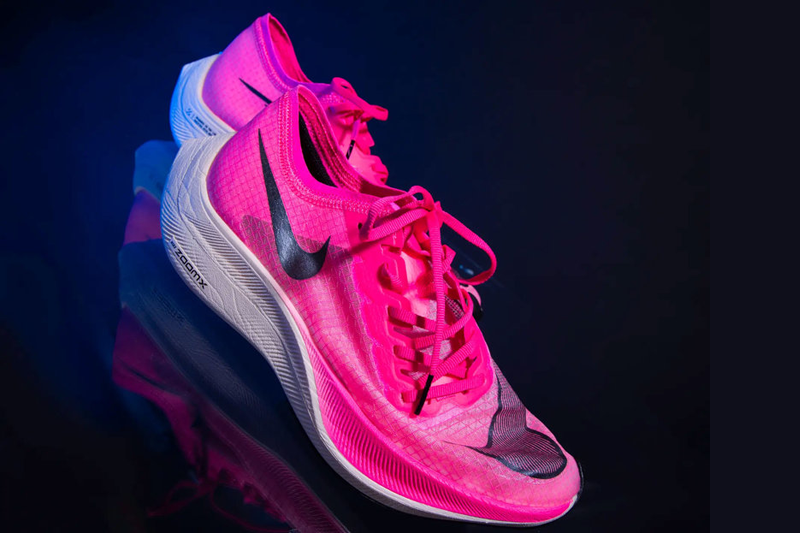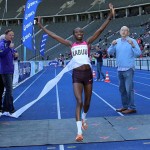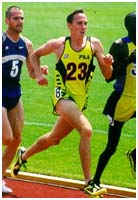World Athletics has today amended its rules governing competition shoes to provide greater clarity to athletes and shoe manufacturers around the world and to protect the integrity of the sport.
World Athletics modifies rules governing competition shoes for elite athletes
The rule amendments (link) that the World Athletics Council has this week approved were recommended by its Assistance Review Group, an internal working group containing technical, scientific and legal experts as well as athlete representatives.
From 30 April 2020, any shoe must have been available for purchase by any athlete on the open retail market (online or in store) for a period of four months before it can be used in competition.
If a shoe is not openly available to all then it will be deemed a prototype and use of it in competition will not be permitted. Subject to compliance with the rules, any shoe that is available to all, but is customised for aesthetic reasons, or for medical reasons to suit the characteristics of a particular athlete’s foot, will be allowed.
Where World Athletics has reason to believe that a type of shoe or specific technology may not be compliant with the rules or the spirit of the rules, it may submit the shoe or technology for study and may prohibit the use of the shoe or technology while it is under examination.
Further, with immediate effect there will be an indefinite moratorium on any shoe (whether with or without spikes) that does not meet the following requirements:
The sole must be no thicker than 40mm.
The shoe must not contain more than one rigid embedded plate or blade (of any material) that runs either the full length or only part of the length of the shoe. The plate may be in more than one part but those parts must be located sequentially in one plane (not stacked or in parallel) and must not overlap.
For a shoe with spikes, an additional plate (to the plate mentioned above) or other mechanism is permitted, but only for the purpose of attaching the spikes to the sole, and the sole must be no thicker than 30mm.
The competition referee will have the power to request that an athlete immediately provide their shoes for inspection at the conclusion of a race if the referee has a reasonable suspicion that the shoes worn by an athlete do not comply with the rules.
The Assistance Review Group has concluded that there is independent research that indicates that the new technology incorporated in the soles of road and spiked shoes may provide a performance advantage and there is sufficient evidence to raise concerns that the integrity of the sport might be threatened by the recent developments in shoe technology.
It has therefore recommended that further research be undertaken to establish the true impact of this technology and that a new working group, comprising biomechanics specialists and other qualified experts, be formed to oversee this research, and to assess any new shoes that enter the market, where required. Shoe manufacturers will be invited to be part of this assessment process.
World Athletics President Sebastian Coe said: “It is not our job to regulate the entire sports shoe market but it is our duty to preserve the integrity of elite competition by ensuring that the shoes worn by elite athletes in competition do not offer any unfair assistance or advantage. As we enter the Olympic year, we don’t believe we can rule out shoes that have been generally available for a considerable period of time, but we can draw a line by prohibiting the use of shoes that go further than what is currently on the market while we investigate further.
“I believe these new rules strike the right balance by offering certainty to athletes and manufacturers as they prepare for the Tokyo 2020 Olympic Games, while addressing the concerns that have been raised about shoe technology. If further evidence becomes available that indicates we need to tighten up these rules, we reserve the right to do that to protect our sport.”
“I would like to thank the Assistance Review Group, chaired by International Technical Official Brian Roe, for its diligent examination of this issue and sound guidance.”
World Athletics will now establish an expert working group to guide future research into shoe technology (and consider any regulatory implications that that research might have), and to assess new shoes that emerge on the market. This group will report to the Competitions Commission, and ultimately to the Council.
World Athletics remains open to continued dialogue with shoe manufacturers and other interested stakeholders regarding the amended rules and their impact as well as the broader question of how to balance shoe technology and innovation with World Athletics’ legitimate interest in preserving integrity in its sport.
Note:
The amendments do not affect the heights of the high jump and long jump shoes, see Rule 5.2.





























Speak Your Mind